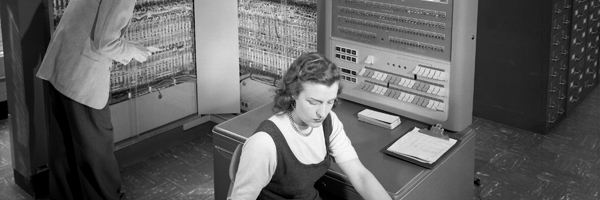Programming For The Masses
Programming has for so long been a craft for the few. In the late 1950s, scientists used to program using front panels where operators poke a board of lamps and toggle buttons. We now refer to that method of programming as a 1st Generation Programming Language.
The crave for more practical means gave birth to 2nd Generation Programming Languages (assembly) which allowed us for the first time to type on a keyboard rather than turn a knob. Around the same time, punch cards played a big role in storing data and NASA are known for operating their first lunar landing missions with a heaping stacks of these cards.
As years progress we started to tackle more complicated problems, and for that we invented the 3rd generation of the craft, riding on elaborate philosophies of object oriented design, encapsulation, and code separation.
But what’s next? As a new Android user, I find my self overwhelmed by the power of the OS and apps. Most impressive of these apps is Tasker.
Tasker allows you to extend the capabilities of your Android phone or tablet by “programming” tasks which will be executed by user-defined events. It allows non-programmers to create scripts by choosing commands and triggers from a pre-defined set, all by tapping a screen; no editor, just icons. This, in my opinion, is the first meaningful step towards a Forth-Generation Programming Language.
How’s that real-time syntax checker going for you?

it will appear here very soon
Submit